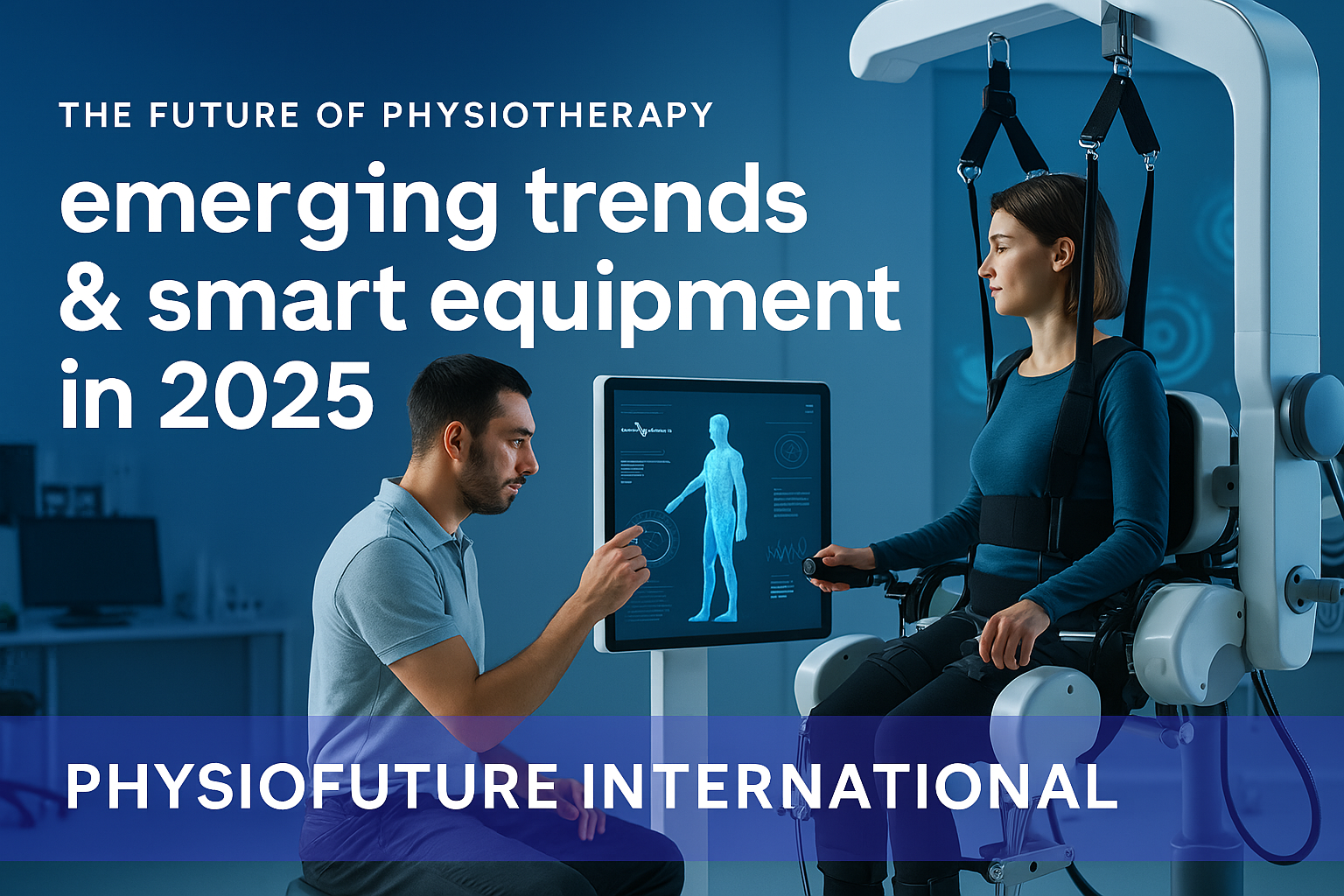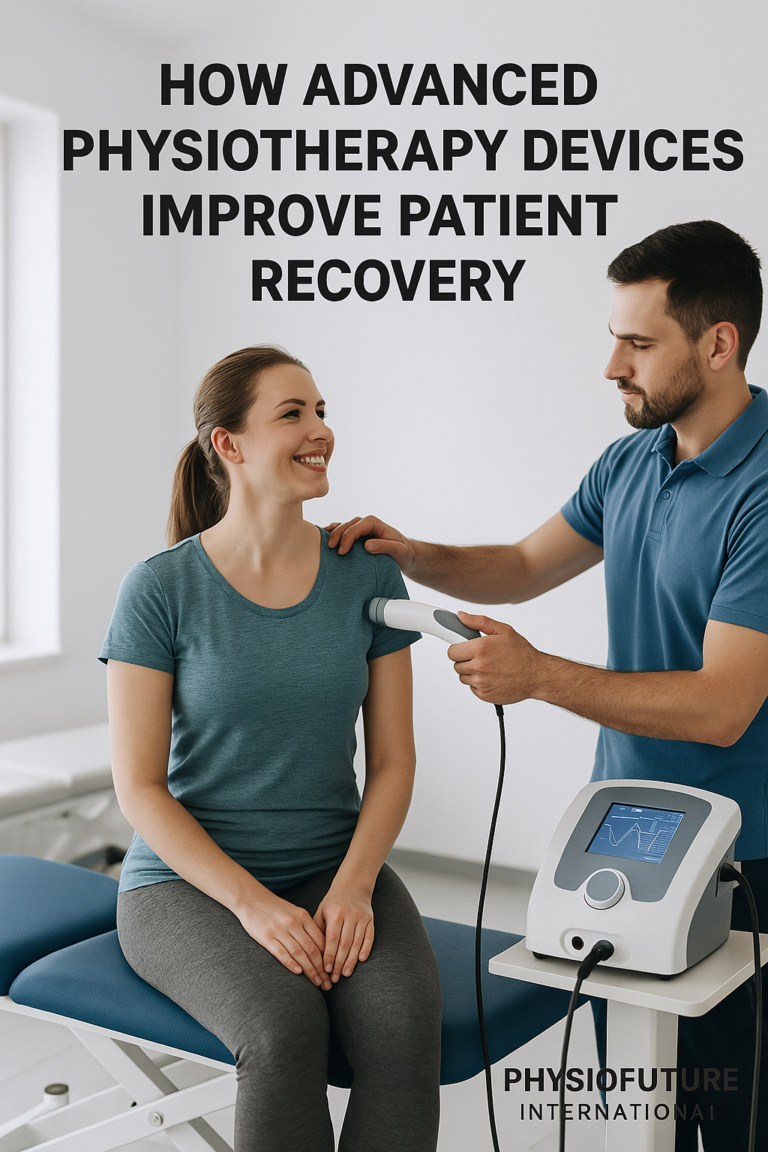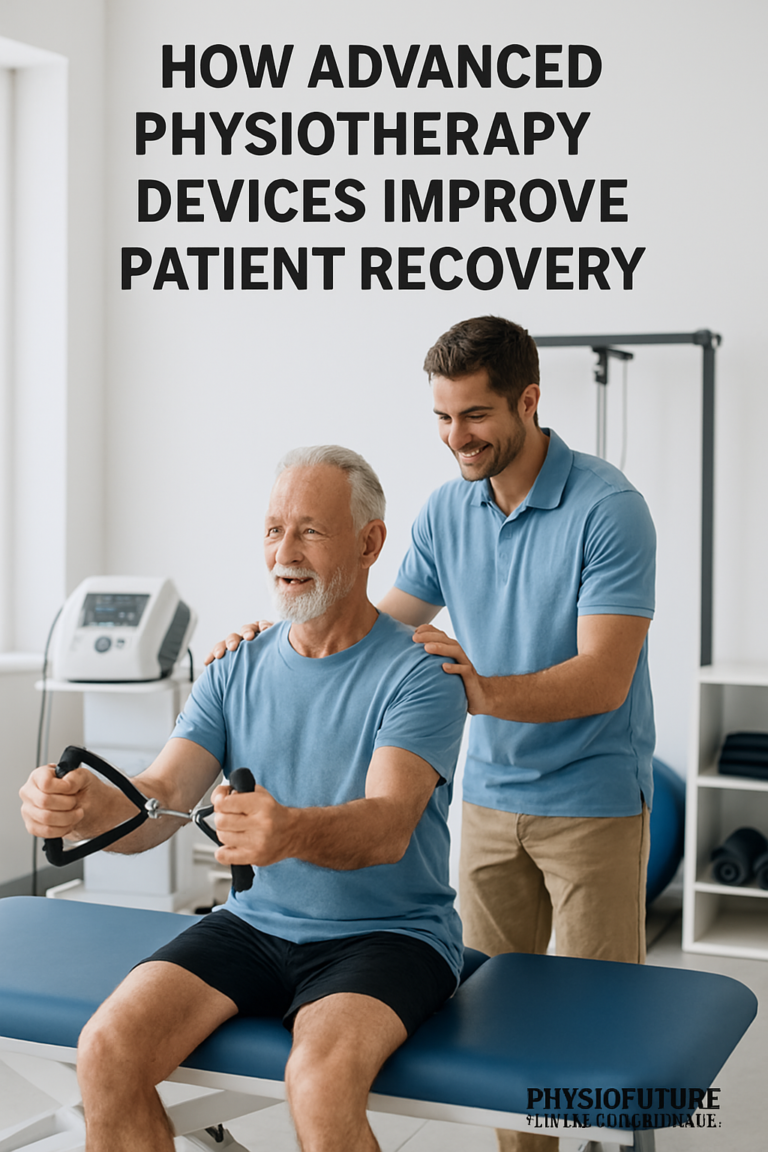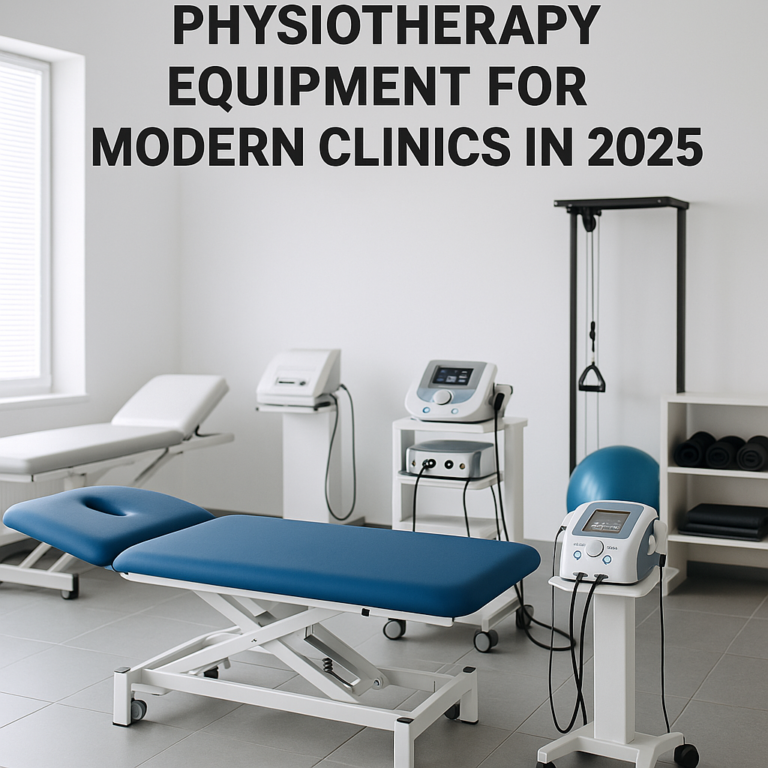The role of physiotherapy equipment
From state-of-the-art electrotherapy machines to advanced robotic rehabilitation tools, modern physiotherapy equipment has transformed the way injuries, neurological disorders, and musculoskeletal conditions are treated. This guide explores the latest advancements in physiotherapy technology, their benefits, and how they contribute to faster healing and long-term wellness.
The Role of Innovation in Physiotherapy
Innovation in physiotherapy focuses on improving patient outcomes, making rehabilitation more efficient, and reducing discomfort during the recovery process. Modern physiotherapy equipment is designed to:
- Enhance treatment precision – Advanced diagnostic and therapy tools ensure targeted treatment.
- Reduce recovery time – Faster healing is promoted through innovative rehabilitation techniques.
- Minimize pain and discomfort – Non-invasive technologies help manage pain effectively.
- Improve mobility and function – Smart rehabilitation tools assist in regaining movement.
- Personalize treatment plans – AI-driven and robotic devices adapt therapy to individual needs.
With these advancements, physiotherapists can offer more effective, comfortable, and engaging treatments to patients recovering from injuries, surgeries, and chronic conditions.
Modern Physiotherapy Equipment & Their Uses
1. Electrotherapy & Pain Management Devices
Modern electrotherapy equipment uses electrical impulses and energy-based treatments to relieve pain, stimulate muscle function, and accelerate healing.
- TENS (Transcutaneous Electrical Nerve Stimulation) Machines – Help reduce pain by delivering mild electrical pulses to affected areas.
- Ultrasound Therapy Machines – Use high-frequency sound waves to penetrate deep tissues, reducing inflammation and enhancing recovery.
- Shockwave Therapy Devices – Deliver acoustic waves to promote tissue regeneration and relieve chronic pain conditions like tendinitis and plantar fasciitis.
- Laser Therapy Machines – Utilize low-level laser light to stimulate cellular repair, improve circulation, and reduce pain.
2. Robotic & AI-Driven Rehabilitation Equipment
Robotics and artificial intelligence (AI) have revolutionized rehabilitation by offering interactive, data-driven solutions for patient recovery.
- Exoskeletons & Robotic Walking Aids – Assist individuals with mobility impairments, such as spinal cord injury patients, in regaining movement.
- AI-Powered Motion Analysis Systems – Provide real-time feedback on movement patterns, helping physiotherapists create customized treatment plans.
- Rehabilitation Robots – Assist in the recovery of stroke patients by guiding repetitive movements to restore motor function.
These intelligent machines offer precision and consistency in therapy, leading to more effective recovery outcomes.
3. Smart Exercise & Rehabilitation Equipment
Exercise is a critical component of physiotherapy, and modern technology has made rehabilitation exercises more interactive and efficient.
- Virtual Reality (VR) Rehabilitation Systems – Engage patients in immersive therapy sessions that improve coordination and mobility.
- Biofeedback Devices – Provide real-time data on muscle activity, allowing patients to adjust movements for optimal performance.
- Isokinetic Strength Training Machines – Measure muscle strength and resistance, helping physiotherapists track progress accurately.
- Interactive Treadmills & Cycling Machines – Offer guided rehabilitation programs with real-time feedback to improve endurance and coordination.
These tools make rehabilitation exercises more engaging and personalized, encouraging patients to remain consistent with their therapy routines.
4. Advanced Mobility & Supportive Equipment
For patients with movement restrictions, modern physiotherapy equipment offers innovative support to improve independence and daily function.
- Dynamic Gait Training Systems – Assist individuals in relearning how to walk safely after injuries or surgeries.
- Smart Prosthetics & Orthotics – Feature AI-driven adjustments to enhance movement efficiency.
- Hydrotherapy Treadmills – Enable low-impact walking or running exercises in water, reducing strain on joints and muscles.
These advancements help individuals regain mobility with greater confidence and comfort.
5. Wearable & Remote Physiotherapy Technology
Remote monitoring and wearable devices allow physiotherapists to track patient progress and provide real-time adjustments to treatment plans.
- Smart Wearables for Posture Correction – Notify users when their posture deviates, preventing musculoskeletal strain.
- Connected Rehabilitation Apps – Offer guided exercise programs with real-time tracking and virtual physiotherapy sessions.
- Wireless EMS (Electrical Muscle Stimulation) Devices – Strengthen muscles and aid in recovery from injuries.
These technologies make physiotherapy more accessible, allowing patients to continue their rehabilitation outside clinical settings.
Benefits of Modern Physiotherapy Equipment
The integration of modern physiotherapy tools offers numerous advantages for both patients and practitioners:
- Faster Recovery: Advanced equipment accelerates healing by targeting specific areas more effectively.
- Personalized Treatment: AI-driven devices and wearable tech enable customized therapy programs.
- Reduced Pain & Discomfort: Non-invasive treatments minimize the need for medications or surgeries.
- Improved Patient Engagement: Interactive and gamified rehabilitation exercises encourage consistent participation.
- Greater Accessibility: Tele-rehabilitation and remote physiotherapy make treatment available to more people.
These innovations are making physiotherapy more efficient, precise, and patient-friendly than ever before.
The Future of Physiotherapy: What’s Next?
The future of physiotherapy will continue to be shaped by technological advancements. Some trends to watch include:
- Artificial Intelligence & Machine Learning: More sophisticated AI models will enhance rehabilitation diagnostics and treatment plans.
- 3D-Printed Custom Orthotics & Prosthetics: Personalized assistive devices tailored to an individual’s needs.
- Neurostimulation for Neurological Rehabilitation: Cutting-edge techniques to help stroke and spinal cord injury patients recover mobility.
- Virtual & Augmented Reality Integration: Making rehabilitation more immersive and engaging.
As technology progresses, physiotherapy will become even more effective in treating a wide range of conditions, improving patient outcomes, and enhancing the overall rehabilitation experience.
Conclusion
Physiotherapy has entered an era of rapid innovation, with modern equipment transforming the way rehabilitation and pain management are approached. From robotic rehabilitation tools and AI-powered diagnostics to electrotherapy and smart wearables, these advancements are revolutionizing healing and mobility.
As technology continues to evolve, physiotherapists and patients alike can look forward to more effective, personalized, and accessible treatment options. Whether you’re recovering from an injury, managing chronic pain, or enhancing mobility, modern physiotherapy equipment offers a promising path to better health and wellness.
Stay informed, embrace innovation, and experience the future of physiotherapy today!





